D-Orbit Space Logistics Company
Space Agencies
D-Orbit Launch and Deployment Services/Space Logistics Company
Background
The Italian company D-Orbit is a market leader in the space logistics and transportation services industry with a track record of space-proven technologies and successful missions. 1)
Committed to helping companies profitably and sustainably maximize the opportunities to do business in space today and into the future, the company has developed proprietary space logistics technology and transportation solutions that will accelerate the growth and development of a trillion-dollar space economy, including human expansion into space. With an incremental strategic approach to the space marketplace, D-Orbit is delivering successful customer outcomes today while developing advanced products and services for the needs of tomorrow.
Founded in 2011, D-Orbit is the first company addressing the logistics needs of the space industry. D-Orbit is a first mover in providing in-space satellite transportation for commercial and institutional customers and in demonstrating satellite-as-a-service capabilities in space. Our ION Satellite Carrier is a flexible, cost effective in-orbit satellite delivery solution that can transport satellites in-orbit and release them individually into distinct orbital slots, significantly reducing the time from launch to operations and the launch costs of an entire satellite constellation. Additionally, we have successfully completed the orbital testing of our space cloud infrastructure designed to provide distributed high-performance data analytics computing and storage capabilities in space. Powered by our unique technology, D-Orbit has launched six missions to date, including four leveraging ION, with two more planned in the first half of 2022.
D-Orbit S.p.A. is a space infrastructure pioneer with offices in Italy (HQs in Fino Mornasco, Lake Como), Portugal (Lisbon), UK (Harwell), and the US (Washington D.C.; its commitment to pursuing business models that are profitable, friendly for the environment, and socially beneficial, led to D-Orbit becoming the first certified B-Corp space company in the world.
InOrbit NOW (ION) Satellite Carrier
ION is a family of end-to-end solutions for the New Space market provided by D-Orbit through innovative, proprietary technology. Our portfolio includes satellite launch and deployment services, hosted payload services, and a set of add-on services that includes mission analysis and design, platform engineering support, software development, acceptance tests, pre-deployment orbital maneuvers, and ground transportation.
ION offers launch and deployment services through a CubeSat and microsatellites deployer called ION Satellite Carrier and proprietary dispensers called DPODs and DCUBEs. 2)
The ION Satellite Carrier is a platform able to modify its own orientation, altitude, and local time of ascending node (LTAN) to quickly deploy CubeSats and microsatellites into precise and independent orbital slots, allowing customers to start their missions faster and in optimal operational conditions.
ION Features
• Multiple form factor support: a 64 1U volume to accommodate multiple combinations of 1U, 2U, 3U, 3U+, 4U, 6U, 6U+, 8U, 8UL, 12U, 12U+, 16U CubeSats, or microsatellites up to 160 kg, with industry record protrusion allowance.
• Ability to perform orbital maneuvers: change of altitude and inclination, true anomaly phasing, RAAN shift.
• Precise deployment: Each satellite is deployed independently, following a command from the ground, with personalized attitude, pointing, and impulse.
• Fast dispersion: up to 85% faster constellations deployment, with wider spacecraft separation, faster signal acquisition, and a stable collision-free formation.
• Guaranteed deployment: a triple fault-tolerant mechanism guarantees the release of all satellites that may not be released nominally before the end of the mission.
Depending on their needs and mission requirements, customers can choose two deployment options:
• Precision Deployment: ION’s ability to release each satellite in a different orbital position, with the attitude, pointing, and impulse needed. Thanks to its propulsion module and attitude control unit, ION Satellite Carrier can modify its altitude and orientation. By calibrating the spring releases mechanism, each satellite receives the desired impulse. The release is ground-initiated, so customers can release their satellites right above their ground station or in specific light conditions. Precision deployment can be achieved either using ION, or a combination of ION and our proprietary dispensers.
• Standard Deployment: a deployment service that relies on third-party compatible launchers equipped with our DPOD and DCUBE dispensers.
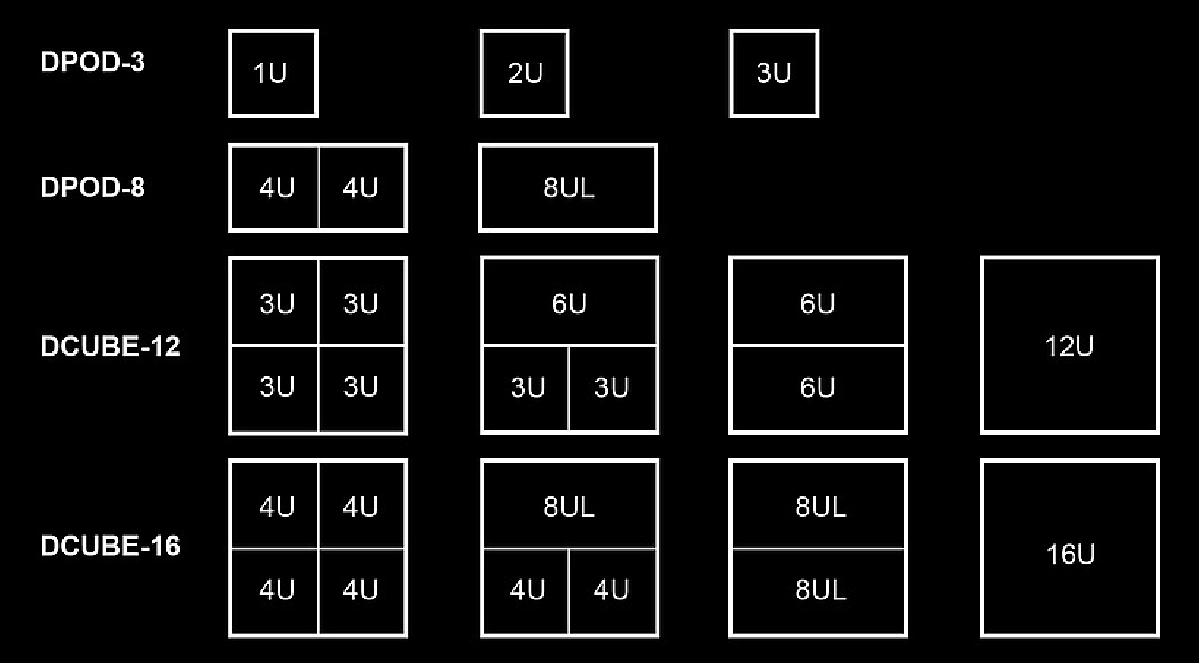
ION Satellite Carrier
The ION Satellite Carrier offers a plug-and-play mechanical, electrical, and data interface to quickly integrate experiments and instruments onboard and operate them from the ground as subsystems of ION itself. Experiments and instruments are fitted inside structures ranging from 1U up to 16U in volume, connected to the main spacecraft bus, so they can be managed directly by D-Orbit mission controllers. Possible applications range from in-orbit demonstration (IOD) missions of 1U experiments, to month-long missions using massive optical or radar instruments. 3)
You provide the platform - we provide the satellite platform
By encapsulating your payload inside a CubeSat structure that communicates through standard, well-defined interfaces, you can greatly simplify the development and testing of your experiment. During the mission, your payload will receive power, telecommunication, and thermal control from the main bus of the hosting spacecraft. You will also be able to control the hosting spacecraft’s orientation during operations, to test your payload under different lighting conditions, or by pointing it to different areas of the globe over multiple orbits. Launch and operation cost are bundled in standard service packages, with a predictable price free from non-recurring costs, lowering the barrier to entry for IOD/IOV from one million dollars or more down to about a hundred thousand.
Having D-Orbit as a single contractual partner enables you to externalize lengthy, unpredictable, and costly processes connected to frequency licensing, launch authorization, and flight readiness certification.

Advantages:
- Standard, well defined interfaces: Plug-and-play CubeSat mechanical interface, Standard 5/12/28V electrical interface
- Access to host resources: Uplink, downlink, memory, and more
- Wide coverage: A network of ground stations provides multiple daily access opportunities
- Attitude control: Ability to point the platform to perform your tasks with optimal exposure to sun, darkness, Earth, and horizon
- Launch flexibility: Multiple launch options in LEO, SSO, and GEO every year, with possibility to switch launch in case of delay
- Multi-orbit: Repeat your experiment at different altitude and planes
Attitude control | Architecture: Three-Axis Control (Wheels, Magnetorquers) |
Communication | Omnidirectional S-Band Up/Down (500 kbit/s) |
Mission capabilities | Compatible Orbit Range: All inclination and Beta angles; |
Platform capabilities | - Mass: Up to 128 kg in extended CubeSat-sized slots (2kg per unit) up to 160 kg of generic payload |
Add-On Services
Acceptance Tests: CubeSats and microsatellites must pass an array of acceptance tests, like thermal vacuum, vibrations, and shock. If you have never done it before, you may feel overwhelmed by the requirements. If you have done it before, you wish you could delegate it to someone else. Either way, we can assist you with this important step, and let you focus on what matters the most to you: getting your satellite to space.
Insurance: In the space business, things can go wrong in the most unexpected way. If you don’t feel comfortable with just crossing your fingers, we offer you a turnkey insurance package covering all the life cycle of your CubeSat and microsatellites, from engineering to the very end of your mission. Moreover, the insurance covers every single payload of your satellite, providing you with a parachute in case of partial failure. We partner with the most important insurance players in the market to provide you with competitive conditions.
Transportation: Your satellite is an extremely delicate package that requires the best care during transportation. This is why we offer specialized transportation services from your manufacturing laboratory to our integration facility. We are prepared for all your transportation needs, ensuring the integrity of your equipment.
Development Status
• June 30, 2022: Canada’s Kepler Communications said June 30 it plans to use D-Orbit’s orbital transfer vehicle for the next two satellites in its low-data-rate constellation. 4)
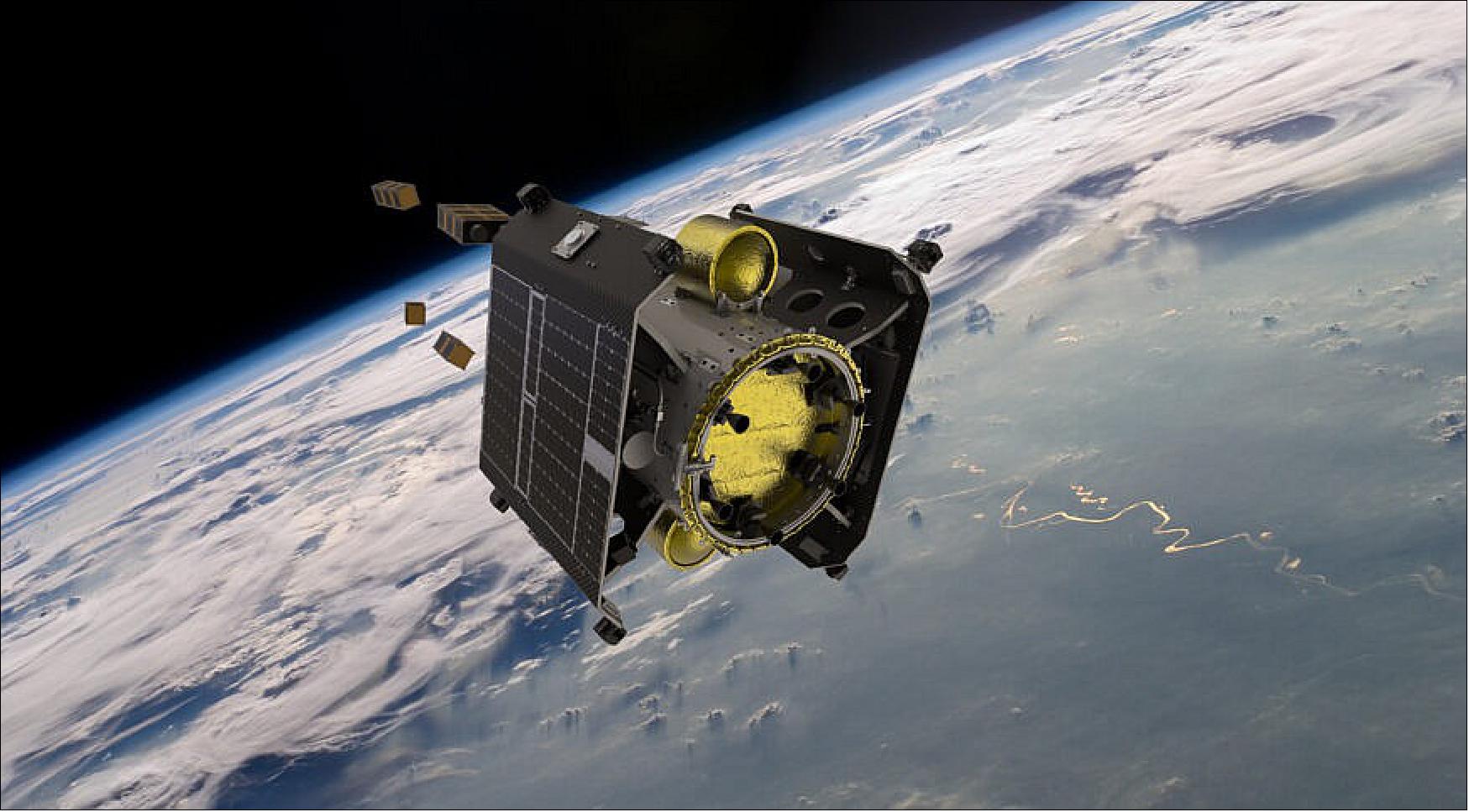
- The Kepler-20 and Kepler-21 satellites will be boarded on the Italian space logistics company’s ION Satellite Carrier, which has booked a flight in the first quarter of 2023 on a rocket the companies declined to disclose.
- After separating from the launch vehicle, D-Orbit intends to use ION to drop Kepler’s satellites off at a sun-synchronous orbit (SSO) between 500 and 600 kilometers. Each satellite is the size of six CubeSats, a standard smallsat form factor measuring 10 centimeters on each side.
- ION and orbital transfer vehicles developed by other companies offer operational efficiencies for satellite operators, enabling them to save fuel by ferrying their spacecraft to custom orbits post-launch.
- While D-Orbit spokesperson Elena Ceraso declined to identify the launch vehicle that will take ION to orbit, she said it is not the mission the company announced June 22 with German startup Isar Aerospace.
- Kepler currently operates 19 satellites to provide connectivity to devices out of range of terrestrial networks.
- The first two were three-unit CubeSats, Kepler chief technology officer Wen Chong said, and the remaining 17 are six-unit spacecraft.
- As with two of the four Kepler satellites that launched Jan. 13 on a SpaceX Falcon 9 rideshare mission, he said Kepler-20 and Kepler-21 will have an S-band terminal to test inter-satellite links.
- Kepler plans to use inter-satellite links to tap into a data-relay constellation of larger satellites it aims to start deploying early next year.
- The Canadian company started testing inter-satellite links earlier this year for its Aether data relay network.
- In October 2020, Kepler announced an agreement to use Momentus Space’s Vigoride orbital transfer vehicle to deploy two satellites in 2021.
- However, Momentus Space ran into technical and regulatory delays that ultimately saw the company launch its first Vigoride mission May 25 on a Falcon 9, without Kepler onboard.
- Momentus started trading shares on Nasdaq in August after merging with Stable Road Acquisition Corp, a special purpose acquisition company (SPAC).
- D-Orbit announced its own SPAC merger plan in January to become a public company in the third quarter of 2022.
• March 21, 2022: D-Orbit, the space logistics and orbital transportation company, announced today the upcoming launch of SPACELUST, the fifth mission using the Company’s proprietary ION Satellite Carrier (ION), a flexible and cost-effective orbital transfer vehicle (OTV) spacecraft designed both to precisely deploy satellites and perform technology demonstrations of third-party payloads in orbit.
- ION will lift off from the Space Launch Complex 40 (SLC-40) at Cape Canaveral Space Force Station (CCSFS), Florida, aboard the SpaceX Falcon 9 Transporter-4 mission. The launch is scheduled for April 2022.
- During the mission, which will start in a 500 kilometer sun-synchronous orbit (SSO), ION will deploy four satellites from Kleos Space S.A. (ASX:KSS, Frankfurt:KS1, Kleos), a space-powered radio frequency reconnaissance data-as-a-service (DaaS) company, and three satellites, PlantSat, SUCHAI 2 and SUCHAI 3, developed at the Space Exploration Laboratory (SPEL) of the Faculty of Physical Sciences and Mathematics (FCFM) at the University of Chile in collaboration with the University of Santiago de Chile.
- The launch of Kleos’ Patrol Mission (KSF2) will increase its reconnaissance capability by adding an additional four to the existing constellation of eight satellites, each expanding Kleos’ data collection capability by up to an additional 119 million km2 per day. In addition, the launch will increase the average daily revisit rate over a 15-degree latitude area of interest to around five times a day.
- The twelve-satellite constellation will detect and geolocate radio frequency transmissions to within 300 meters, improving the intelligence, surveillance, and reconnaissance (ISR) capabilities of governments and commercial entities, uncovering data points to expose illegal activity on land and sea.
- PLANTSAT is a 3U CubeSat that will study the growth of a suitable plant in low Earth orbit, replicating the conditions that life will experience on the surface of Mars. The Satellite of the University of Chile for Aerospace Investigation (SUCHAI) has two nanosats named SUCHAI 2 and SUCHAI 3, which will be launched into orbit to perform basic science research funded by the Air Force Office of Scientific Research (AFOSR), the basic research technical directorate of the Air Force Research Laboratory (AFRL). Multidisciplinary teams will undertake cutting edge research for scientific exploration and technological development.
- Finally, ION will host a payload from Upmosphere, an Italian start-up offering the opportunity to value one’s memories by placing them in special wooden boxes, which will travel around the Earth for a few years aboard D-Orbit’s satellites. The payload consists of a wooden UP-box containing mementos from four different clients.
- “We are looking forward to this new mission,” said Renato Panesi, Ph.D., D-Orbit’s Chief Commercial Officer. “Our fifth ION mission represents an opportunity to collect additional data and continue to push the envelope of our spacecraft. We look forward to continuing to expand our capabilities in space, helping our customers deliver their satellites in orbit just that much faster.”
- SPACELUST is ION’s fifth mission in less than two years and the second of 2022. D-Orbit launched its first ION in September 2020 aboard an Arianespace VEGA launcher, then three further missions in January 2021, June 2021, and January 2022 aboard SpaceX’s Transporter-1, Transporter-2, and Transporter-3 missions, respectively. With this mission, the Company will have launched to space more than 70 payloads collectively.
- While preparing for this mission, the Company is also planning for an additional mission, which is currently scheduled for June 2022.
• January 27, 2022: D-Orbit announced plans Jan. 27 to go public through a merger with a special purpose acquisition company in a deal that values the Italian in-space transportation and logistics firm at $1.28 billion. 5) 6) 7)
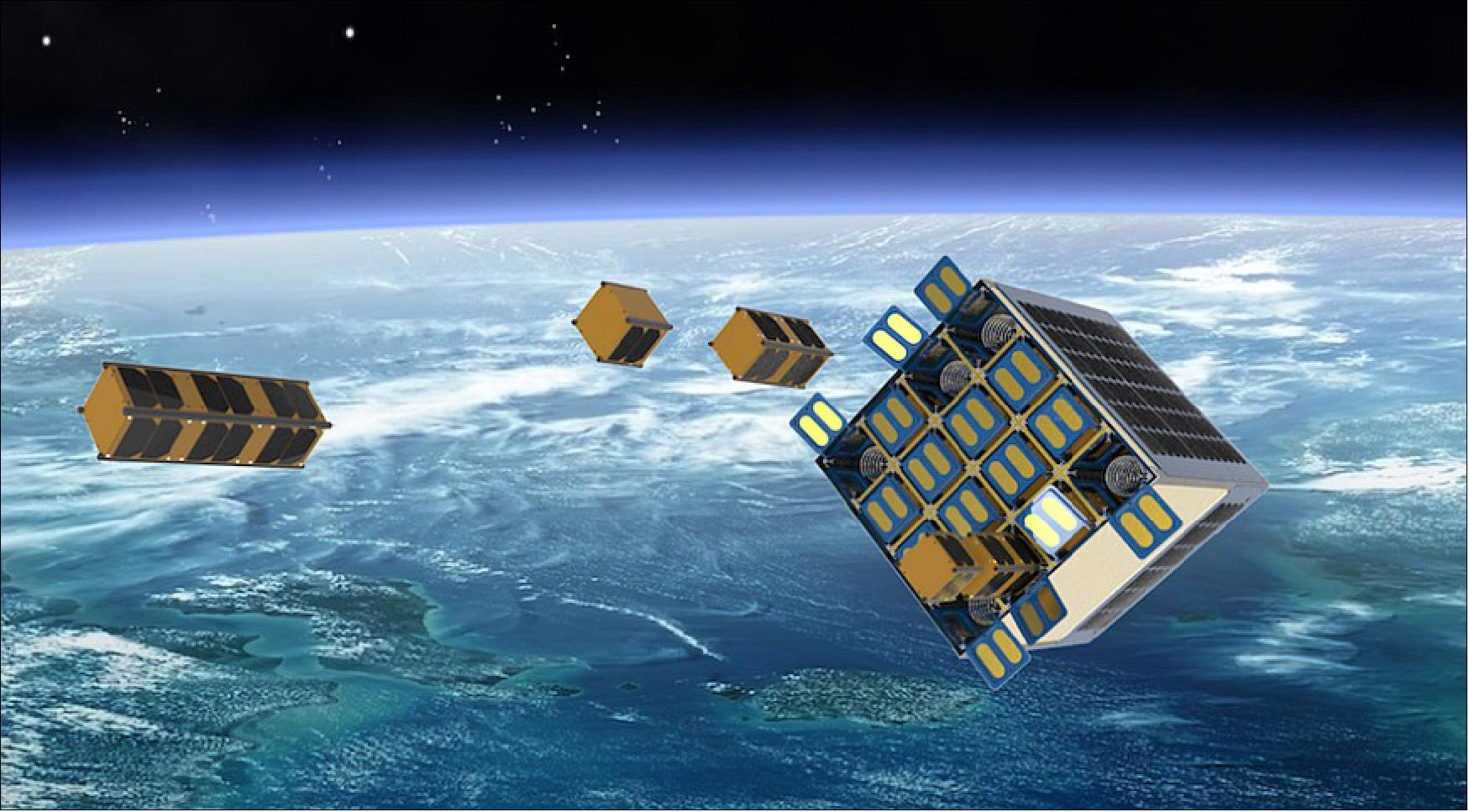
- Through the merger with Breeze Holdings Acquisition Corp., D-Orbit expects to raise $185 million, funds it will use to expand its staff and accelerate investments in products and services including its In-Orbit Now (ION) Satellite Carrier.
- D-Orbit was the first in-space transportation company to prove it could move satellites from the point where a large rocket drops them off in orbit to their desired orbital destinations. The Italian company has conducted four ION missions. Two more are scheduled in the first half of 2022.
- D-Orbit has ambitious plans for new products and services, including space-based cloud infrastructure “to provide distributed high-performance data analytics computing and storage capabilities,” according to the Jan. 27 news release.
- “D-Orbit was founded with the mission to enable expansion in space and fuel the new space economy, and the transaction we are announcing today is an important step forward toward our goals,” said D-Orbit CEO Luca Rossettini said in a statement. “We have made tremendous progress developing and proving our unique ION technology, as well as building a dedicated customer base to which we have provided last-mile satellite delivery and advanced infrastructure services for more than eight years. Today, we deliver complete end-to-end services, guarantee satellite deployment in requested orbits and reduce our customers’ time from launch to revenue generation.”
- Through the SPAC deal, D-Orbit is joining forces with the Charles F. Bolden Group, an organization founded by former NASA Administrator Charles Bolden, a retired Marine Corp major general. The Bolden Group, a D-Orbit investor, has a partnership agreement with Breeze. Joining the board of the public company being created by the merger will be A. Ché Bolden, Bolden Group president and CEO, and Renee Wynn, former NASA chief information officer and a Bolden Group cybersecurity consultant.
- “With its proven space transportation offering, in-orbit services, B-Corp certification and differentiated in-house technologies, D-Orbit can play a key role in facilitating satellite deployment today and capturing opportunities in the future as demand increases for in-orbit services,“ A. Ché Bolden said in a statement. “We look forward to working closely with Luca and the D-Orbit team to take this business to astronomical levels of growth.”
- If all conditions for the merger are completed, including approval by Breeze Holdings Acquisition Corp. shareholders, D-Orbit common stock will trade on the Nasdaq Capital Market under the ticker symbol DOBT.
- In the news release, D-Orbit reported revenues of $3.4 million in 2021, a $21.5 million backlog, contracts being negotiated valued at $167 million and a $1.2 billion pipeline. The company expects to become profitable in 2024 with anticipated revenues of approximately $453 million.
- D-Orbit began testing space-based cloud infrastructure last year.
- “The Company believes development of multiple iterations of the system will enable future ION Satellite Carriers to deliver in-orbit cloud based artificial intelligence computing services,” according to the news release.
- D-Orbit’s merger with Breeze Holdings is expected to be completed in the second or third quarter of 2022.
- Breeze “evaluated a number of potential companies to merge with and determined that D-Orbit checked all the boxes,” J. Douglas Ramsey, Breeze Holdings chairman and CEO, said in a statement. “It has unrivaled satellite deployment technology and is positioned at the forefront of a new category in space infrastructure that is poised to serve industries we know well, including oil and gas, and enabling products and services for the future. We believe D-Orbit has strong growth potential in a compelling market and are excited about how its technology will support a sustainable future for space infrastructure.”
D-Orbit Launches
• On 1 April 2022 at 16:24 UTC, the ION Satellite Carrier, a CubeSat deployer named Almighty Alexius, was launched atop the Transporter-4 rideshare mission with a SpaceX Falcon 9 rocket from the Space Launch Complex 40 (SLC-40) at Cape Canaveral Space Force Station (CCSFS), Florida, placing one relatively large satellite (EnMAP) and dozens of smallsats into low Earth orbit. 8)
• On January 13th, 2022, at 15:25 UTC, the ION Satellite Carrier, named Elysian Eleonora, was launched atop the Transporter-3 rideshare mission with a SpaceX Falcon 9 rocket from the Space Launch Complex 40 (SLC-40) at Cape Canaveral Space Force Station (CCSFS), Florida. On the same day, at 1h 24 m 30 s after liftoff, the vehicle was successfully deployed into a 500 km Sun-synchronous orbit (SSO). D-Orbit referred to this 4th ION SatelliteCarrier mission: 'Dashing Through The Stars'. 9) 10)
- On board this launch were 105 commercial and government spacecraft — including CubeSats, microsats, PocketQubes, and orbital transfer vehicles.
- The D-Orbit mission manifest includes Lockheed Martin, with a satellite developed in collaboration with the University of Southern California Space Engineering Research Center for the testing of complex vision processing algorithms, SatRevolution, with a group of satellites for Earth Observation and scientific purposes, and the Czech Aerospace Research Centre (VZLU) in cooperation with Spacemanic, with a satellite testing technologies for future missions of the Czech satellite constellation.
- Update 2 on 14 January 2022. After acquiring the signal from the ION SCV Elysian Eleonora a few hours after launch, the D-Orbit operations team has started all actions and procedures required by the Launch and Early Orbit Phase (LEOP) and Commissioning phase.
- Update 3 on 21 January 2022. The Phase 1 LEOP (Launch and Early Orbit Phase) of ION’s Dashing Through the Stars mission has been successfully completed ahead of schedule. The operations team has neutralized the rotation imparted by the launch vehicle during separation, corrected the attitude, and tested the satellite’s subsystems. We are now about to start the Commercial Phase, Orbital Transportation with the release of the satellites of our customers.
- Update 4 on 26 January 2022. ION Elysian Eleonora successfully deployed VZLUSAT-2, a 3U CubeSat mission of the Czech Aerospace Research Centre (VZLU) Research Centre in cooperation with Spacemanic, into its operational orbit. Satellite communication with telemetry and telecommand will be performed by UHF band in the amateur frequency band. Mission operations are provided by a team from the University of West Bohemia, Pilsen.
- Update 5 on 28 January 2022. ION Elysian Eleonora correctly delivered the 3U CubeSat LabSat of SatRevolution into its operational orbital slot. LabSat is the result of a project focusing on miniaturized laboratory tools and technologies for testing in microgravity conditions.
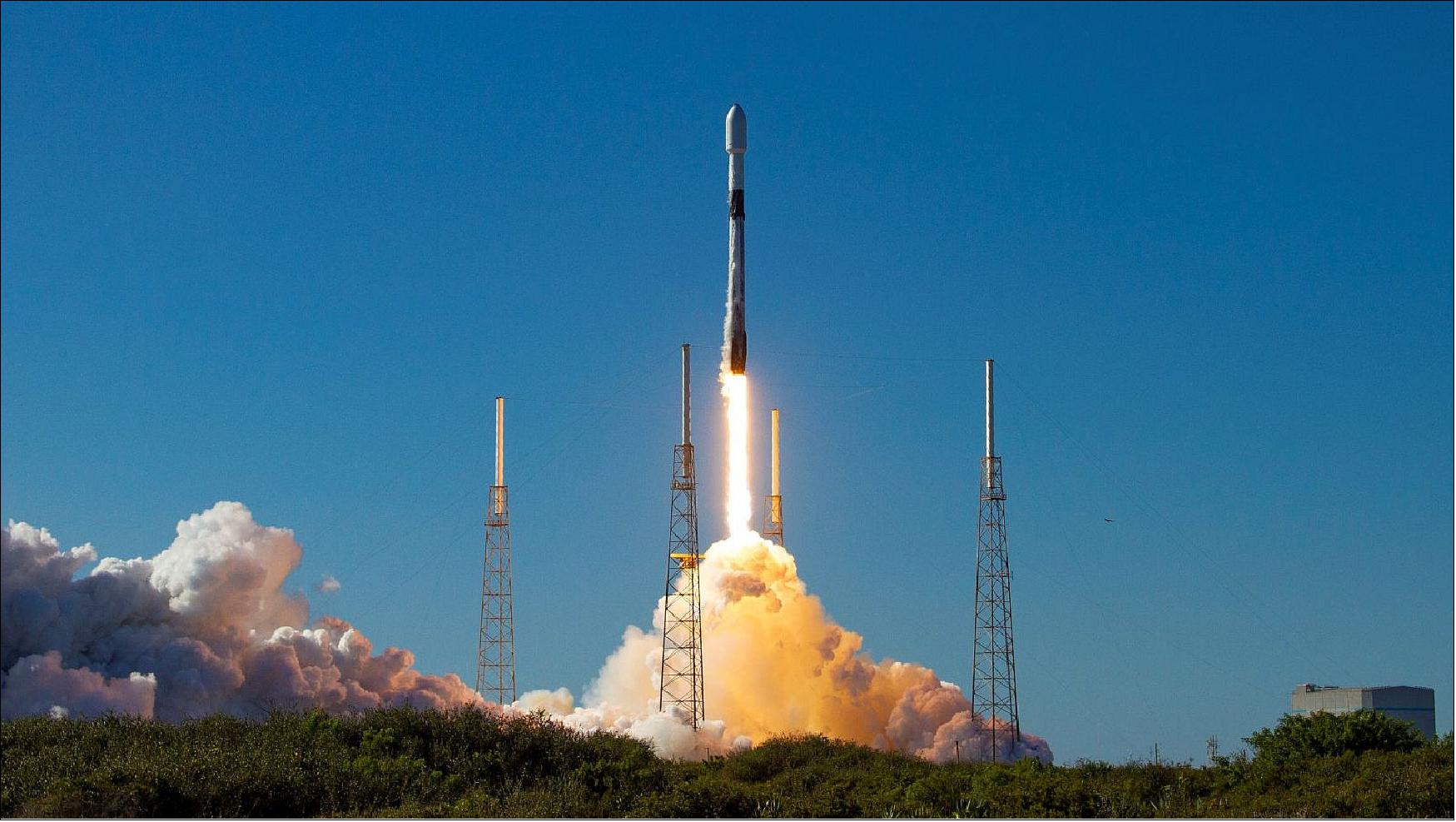
- Once the deployment phase is completed, ION will begin the on-orbit testing of third-party payloads, including the second phase of testing of D-Orbit’s cloud platform designed to provide distributed high-performance data analytics computing and storage capabilities in space. For this mission, D-Orbit is working in collaboration with Unibap and the European Space Agency (ESA) who are supporting the in-orbit test of a hyperspectral electro-optical instrument developed by research institution VTT. This platform allows third parties to upload and execute cloud applications and AI workloads to process images as soon as they are created, allowing results to be sent to users in record time. The first test campaign, which took place during ION’s previous mission, successfully executed 23 separate SpaceCloud compatible applications from a variety of partners.
- This on-orbit testing phase of the mission will also include the validation of ARCA by CYSEC SA, a hardened operating system with a built-in cryptographic service and key management system to provide end-to-end cyber security protection for satellite communications.
- “The beginning of a new mission is always exciting, regardless of how many times you have been through it,” commented Luca Rossettini, CEO of D-Orbit. “Now, some of the activities feel almost routine but we like to set ourselves new challenges, achieve new milestones, and offer to our customers new advanced services on top of the well-proven ones. I’m proud that our services are helping the ecosystem to grow faster: cooperation is the new keyword for space, and this mission is a demonstration that cooperation moves the growth way beyond competition”.
- The mission, including operations on payloads, will be managed by D-Orbit’s mission controllers through Aurora, the company’s proprietary cloud-based mission control software suite that enables satellite operators to manage and control multiple payloads simultaneously, from any location in the world, without having to invest in their own saving all the expenses connected with software design, development, testing, deployment, and maintenance.
- D-Orbit launched its first ION in September 2020 aboard an Arianespace VEGA launcher, followed by two further missions flown in January 2021 and June 2021 aboard SpaceX’s Transporter-1 and Transporter-2 missions respectively. With this mission, the Company will have launched to space collectively more than 70 payloads.
• September 8, 2021: The UK branch of D-Orbit signed a €2,197M contract with the European Space Agency (ESA) for phase 1 of the development and in-orbit demonstration of a “Deorbit Kit” as part of ESA’s Space Safety Programme (S2P). 11)
- The decommissioning kit proposed by D-Orbit is a self-contained suite of equipment that can be tailored to space vehicles of any size to enable them to perform a propulsive decommissioning maneuver at the end of their mission or after a failure, even if the spacecraft has become unresponsive. The kit and the know-how developed are also foundational capabilities that can be used in the future as part of active debris removal mission concepts.
- “We believe that the development and in-orbit demonstration of this system will pave the way for the development of several other applications of autonomous deorbiting systems for future LEO missions” commented Simon Reid, COO of the UK branch of D-Orbit. “In addition, the work performed in this activity will define a foundational capability that can be adapted in the future for active debris removal mission concepts, such as on-orbit installation of de-orbit kits on satellites already in space”.
- D-Orbit will lead a consortium to develop the multi-purpose kit, which will be installed initially on a Vega Rocket payload adapter called Vespa (Vega Secondary Payload Adapter). This type of equipment is traditionally left in a ‘gradual disposal’ orbit, which although compliant with current international guidelines, represents a contribution to the growing debris problem. The kit will be installed before the launch to perform a propulsive direct re-entry maneuver over a designated uninhabited area shortly after the rocket has deployed its payload.
- The design reference mission for the first phase of development for this new device is the VESPA Upper part, which is currently foreseen as the launch adaptor for the ESA ClearSpace-1 mission, scheduled for 2025. The final target application for the device will be confirmed at the start of phase 2 of the program.
- “This contract is an important milestone for D-Orbit group and for the entire space sector,” says Luca Rossettini, CEO of D-Orbit. “We, space pioneers in the space industrial ecosystem, shall stand up and act to preserve the future of our business and the entire humankind. The first product we launched on the market a long time ago was a decommissioning device: today we are working to make sure the space debris problem turns into a commercial opportunity and a resource for the future development of space.”
- Besides D-Orbit, the consortium includes Airbus Defence and Space, ArianeGroup, GMV Innovating Solutions, and Optimal Structural Solutions. The kickstart meeting is scheduled for today, September 8th, 2021.
• On June 30, 2021 at 19:31 UTC, a Falcon 9 of SpaceX launched the Transporter-2 rideshare mission carrying 88 spacecraft into orbit. 12)
- The mission was launched from the Space Launch Complex 40 (SLC-40) at Cape Canaveral Space Force Station (CCSFS), Florida. On the same day, 60 minutes after liftoff, the vehicle was successfully deployed into a 500 km Sun synchronous orbit (SSO). 13) 14)
- D-Orbit shared this mission with its ION Satellite Carrier, named ION SCV 'Dauntless David' and a mission name Wild Ride. Over the course of the WILD RIDE Mission, ION SCV Dauntless David will deploy six satellites into distinct orbits and perform the in-orbit demonstration of 12 hosted payloads. The mission serves clients from 14 different nationalities and brings the total number of payloads launched by D-Orbit up to 63.
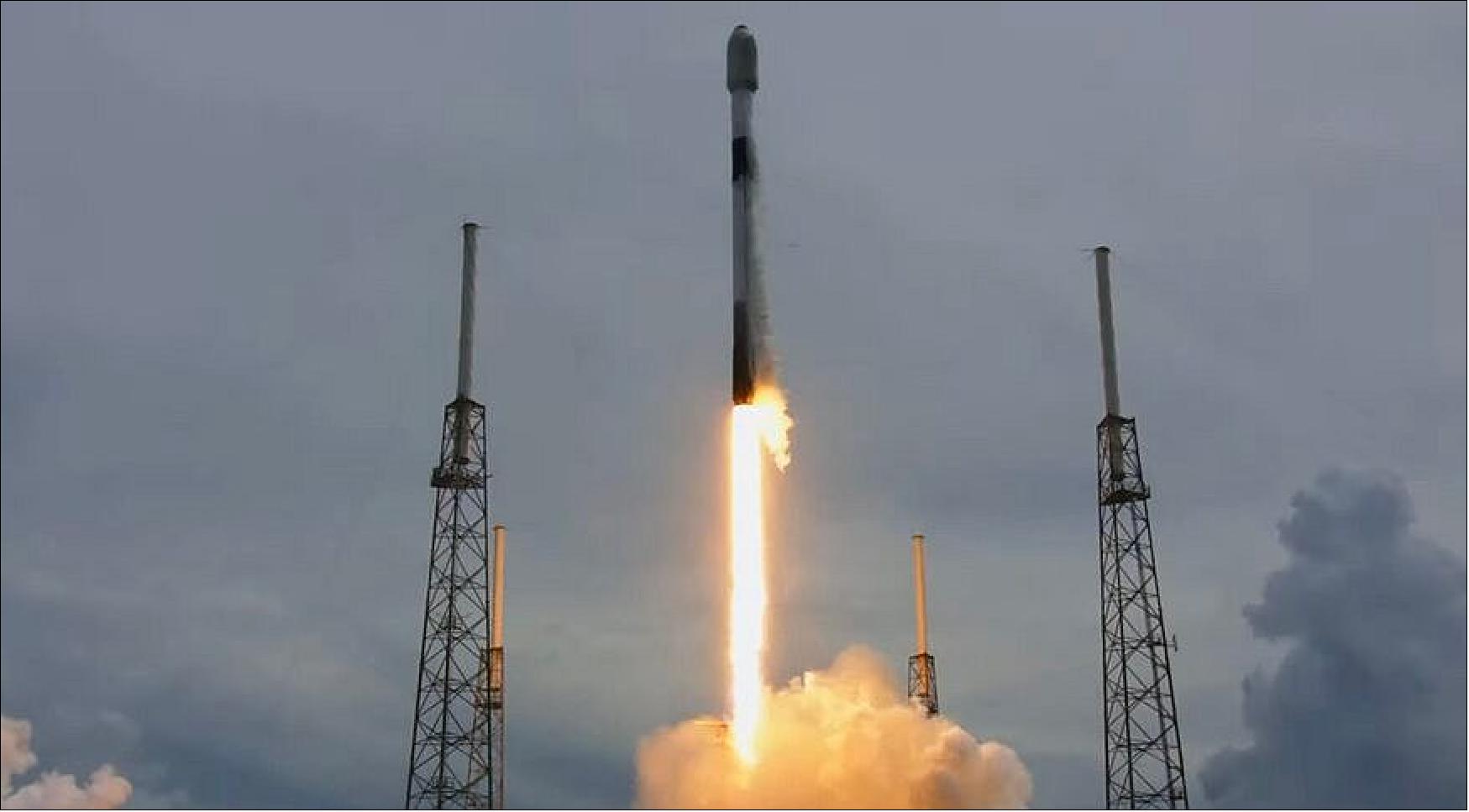
- The D-Orbit mission manifest includes international clients like the Spanish Elecnor Deimos, the Bulgarian EnduroSat, and the Kuwaiti Orbital Space, which will launch the country’s first radio amateur satellite. Also on board, under contract with ISILAUNCH and integrated into a QuadPack from Dutch satellite manufacturer ISISPACE, are Finnish Reaktor Space, Marshall Intech Technology from UAE, and the Royal Thai Airforce.
- During the deployment phase, ION will deploy each satellite into a distinct orbit. The release of the six satellites onboard will follow a highly customized plan that defines the moment of release, and the direction and speed of ejection of each spacecraft.
- July 2 2021 update 2 - Beacon received: D-Orbit received ION's beacon and the operations team is now performing a series of health check procedures required by the LEOP and commissioning phase in preparation for the operational phase. At the moment, all conditions are nominal.
- July 16. 2021 update 3 - Beginning of the Deployment Phase: After concluding the LEOP and commissioning phase, today we have entered the deployment phase of the mission by successfully deploying QMR-KWT, a 1U of Orbital Space (Kuwait), and Ghalib a 2U of Marshall Intech Technologies (UAE).
- July 19, 2021 update 4 - Third satellite deployed: The mission moves forward smoothly. Over the weekend, on Sunday July 18th, ION has deployed Napa-2, a 6U CubeSat by Marshall Intech Techonologies (Royal Thai Airforce).
- July 25, 2021 update 5 - End of the Deployment phase: ION Dauntless David successfully deployed all six satellites hosted onboard and will now proceed with the in-orbit demonstration of 12 hosted payloads.
- October 11, 2021 update 6 - Nebula successfully tested in orbit: Nebula, our on-demand, in-orbit cloud computing, and data storage service integrated aboard ION Dauntless David has successfully been tested in orbit.
- Designed to provide distributed high-performance data analytics computing and storage capabilities in space, Nebula is a hardware-software environment that enables end-users to uplink and run software and artificial intelligence and machine learning (AI/ML) apps in a way similar to conventional, terrestrial cloud environments. The test campaign successfully executed 23 separate applications developed by a variety of partners for disaster monitoring, video and image data transfer optimization, space domain awareness, advanced image processing for precision agriculture, defense early warning, and integrated satellite communication.
- All mission objectives have been accomplished, validating the approach of an advanced in-orbit computing platform capable of performing advanced computations on raw data directly in space, turning them into actionable information optimized for downlink.
• January 24, 2021: SpaceX launched the Transporter-1 rideshare mission carrying 143 spacecraft, dozens of smaal satellites into space. 15)
- SpaceX's customers on board Transporter-1 include: Planet Labs, Exolaunch, D-Orbit, Kepler Communications, Spaceflight Inc, Nanoracks, NASA and Capella Space, as well as iQPS, Loft Orbital, Spire Global, ICEYE, HawkEye 360, Astrocast, and the University of South Florida Institute of Applied Engineering.
- Notably, the 10 Starlink satellites aboard this mission will be the first in the constellation to deploy to a polar orbit, as the company continues to expand public access to its satellite internet network. Those 10 satellites were added after Momentus took its first Vigoride mission off the Transporter-1 launch earlier this month. Momentus cited additional time needed for regulatory approval as the cause of the change.
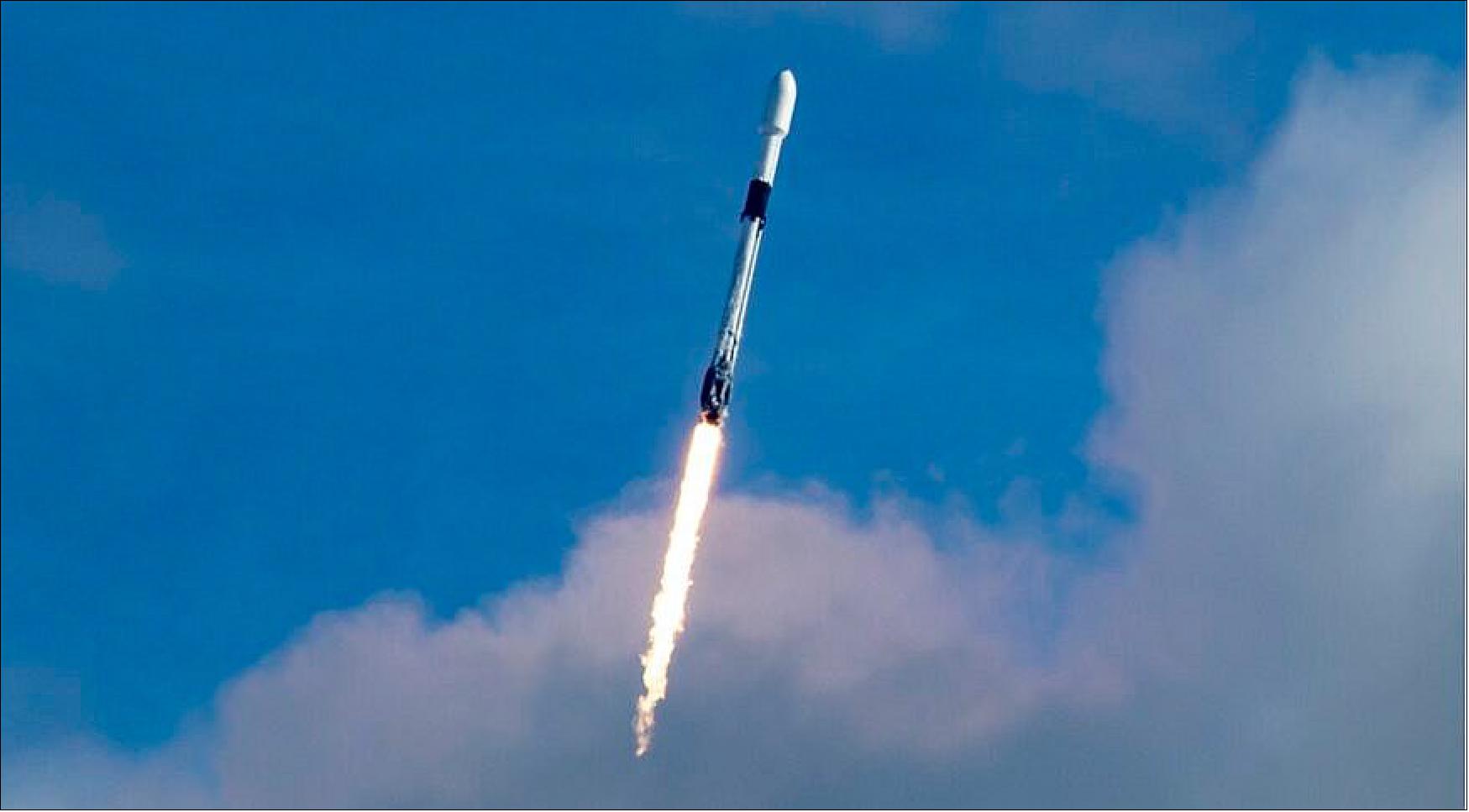
- The D-Orbit 'PULSE' mission launched another ION Satellite Carrier, named ION SCV Laurentius, atop a SpaceX Falcon 9 rocket. ION SCV Laurentius is an upgraded and enhanced version of the vehicle launched in the fall of 2020, which precisely deployed twelve satellites into orbit. 16)
- During the Pulse mission, the vehicle will deploy 20 satellites, among which eight SuperDoves from Earth imaging company Planet Labs, and perform the in-orbit demonstration of two optical payloads from EICAS and Instituto de Astrofísica de Canarias (IAC) respectively, among other experiments on unique payloads.
- February 2, 2021 update 2: After acquiring the signal from ION SCV Laurentius over the past week, the D-Orbit operations team has been performing all actions and procedures required by the Launch and Early Orbit Phase (LEOP) and Commissioning phase. ION will then be ready for the first part of the Pulse mission: the precise deployment of the 20 satellites hosted onboard.
- February 10, 2021 update 3 - beginning of the deployment phase: Over the past few days, ION SCV Laurentius has successfully deployed 2 of the 8 Planet’s Superdove satellites hosted onboard in the precise orbital slot requested by the client. After the smooth release of the spacecraft from our deployer, Planet has confirmed the acquisition of the signal.
- February 16, 2021 update 4: We are now at satellite #5 of the 8 Planet’s Superdoves hosted onboard. In the meantime, we started downloading pictures taken by D-Sense, our multi-sensors, camera-equipped attitude determination and control module.
- February 22, 2021 update 5: The 8th and last of Planet’s Superdoves hosted onboard has successfully been deployed and Planet has confirmed acquisition of signal.
- March 11, 2021 update 6 - Hosted payloads commissioning phase: After the successful deployment of 8 Planet’s Superdoves from ION Satellite Carrier, we have now entered the commissioning phase and preliminary testing of the two optical payloads hosted onboard: ARGO and DRAGO. ARGO is a fully autonomous plug & play star tracker, developed by EICAS Automazione and specifically designed to satisfy the needs of the emerging small satellites market, especially in terms of cost-competitiveness. DRAGO (Demonstrator for Remote Analysis of Ground Observations) is a short-wave infrared space camera for Earth observation developed by Instituto Astrofisica de Canarias (IAC). Both payloads will shortly begin their mission.
- May 4, 2021 update 7 - Orbital maneuvers: Over the past few weeks, the D-Orbit operations team has been involved in the successful testing and validation of ION’s orbital maneuver capabilities, including the firing of Dawn's aerospace B20 thrusters, attitude and orbit control strategies and algorithms, post-firings orbital determination, and flight dynamic processes.
- May 17, 2021 update 8 - End of the deployment phase of the mission: ION successfully deployed all 20 satellites hosted inside, including eight SuperDoves from Planet.
- The orbit-changing maneuvers succeeded in changing the altitude by up to 10 km, while also demonstrating ION’s ability to change the local time of the ascending node (LTAN).
- The company is now moving forward with the in-orbit demonstration phase of the two commercial payloads onboard.
• September 3, 2020: European launch provider Arianespace conducted a successful return-to-flight mission of Vega, its light-lift rocket, on Sept. 2, completing the vehicle’s first launch in 14 months. 17)
- Vega lifted off from the Guiana Space Center in Kourou, French Guiana, at 9:51 p.m. EDT (2:51 UTC) , carrying 53 satellites to low Earth orbit in the debut of Arianespace’s Small Spacecraft Mission Service (SSMS) dedicated rideshare offering. The first four smallsats separated roughly 40 minutes later, followed by another three smallsats about 52 minutes after liftoff.
- The remaining 46 satellites separated over the course of two and a half minutes, starting one hour and 42 minutes after liftoff. Vega’s upper stage conducted a final burn two hours and four minutes after liftoff to deorbit in Earth’s atmosphere.
- The launch, designated VV16, ends a long string of delays stemming from payload logistical challenges, technical issues, the coronavirus pandemic and surprisingly persistent poor weather.
- The European Space Agency, which along with the European Commission helped fund the proof-of-concept mission, announced plans in 2017 to launch the smallsat Vega mission in 2018. However, not all customers were ready by then, pushing the launch out to the second half of 2019.
- Vega experienced its first-ever failure in July 2019, destroying the United Arab Emirates’ FalconEye-1 reconnaissance satellite and punting SSMS into 2020. Avio, the rocket’s manufacturer, traced the failure’s most probable cause to insufficient thermal protection in Vega’s second stage, the Zefiro-23.
- ESA and the space agencies and militaries of France and Italy also participated in the failure investigation, Roland Lagier, Arianespace chief technical officer, said during the launch webcast. That review “identified a combination of weaknesses in the design, the manufacturing, and the control processes” within part of the Zefiro-23, he said. The failure review team produced 20 recommendations, of which 14 were mandatory prior to Vega’s return to flight, he said without going into specifics on those corrective actions.
- Vega was deemed ready for its SSMS mission in March when the coronavirus outbreak became a global pandemic, leading to widespread travel bans and the cessation of launch activity at the Guiana Space Center. The French government, which oversees the South American spaceport, eased travel restrictions in May, allowing launch personnel to fly to the Guiana Space Center so long as they adhered to a 14-day quarantine after arrival.
- Arianespace and Avio were again ready to launch Vega in June, but prolonged upper level winds blew the mission into August. Then a 19-day delay with an Ariane 5 launch bumped Vega to September. A final one-day delay occurred when Typhoon Maysak hit the Korean peninsula Sept. 1, preventing use of a ground station on the South Korean island of Jeju needed for telemetry during the Vega launch.
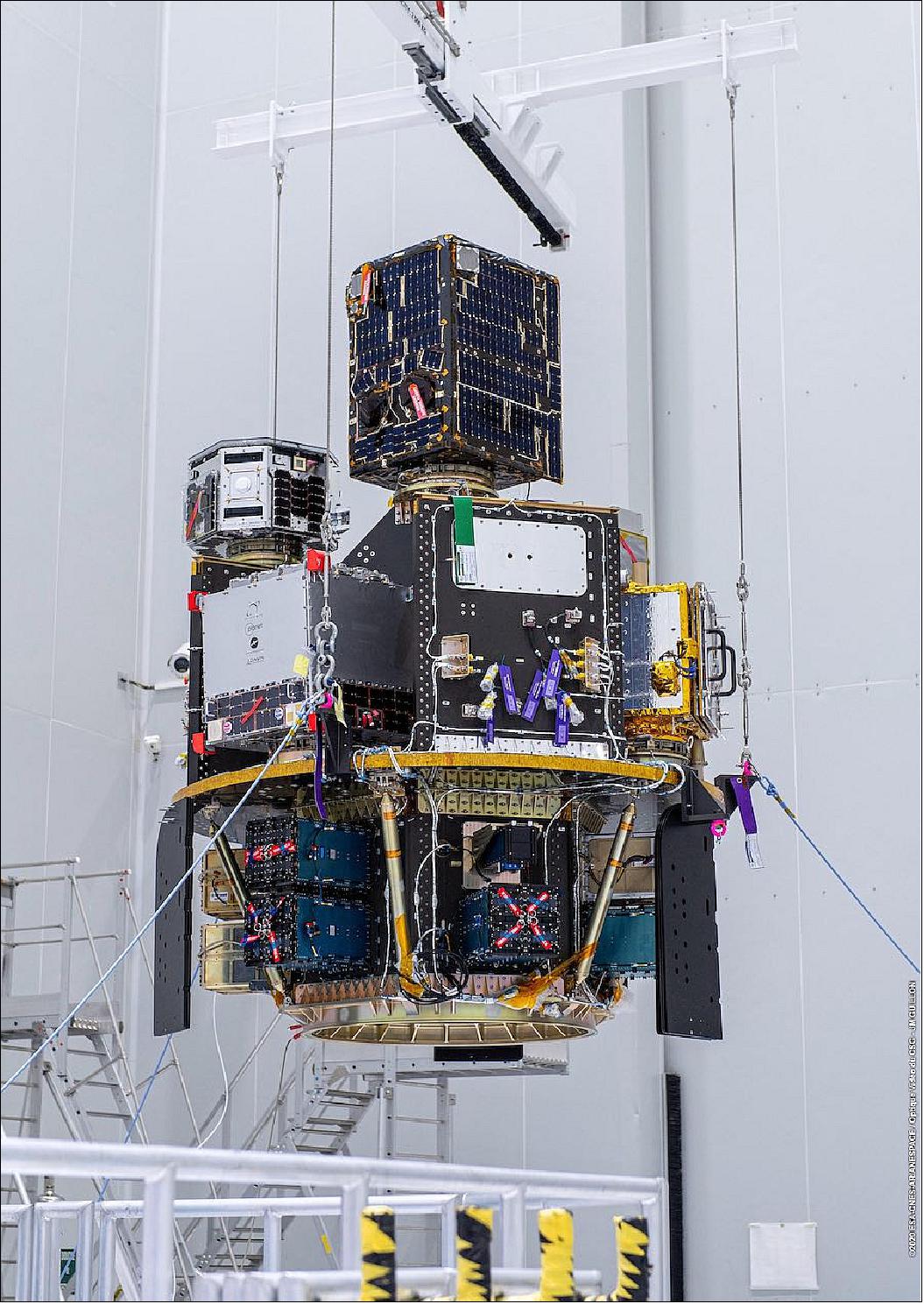
Smallsats Now in Orbit
- Arianespace’s SSMS mission carried satellites for 21 customers and from 13 countries. Czech company SAB Aerospace built the deployer used to carry all 53 spacecraft, including smaller deployers from other companies, and integrated the satellites into the rocket.
- Remote sensing company Planet counted for nearly half the satellites on Vega. Planet had 26 SuperDove cubesats on the rocket — 14 that used QuadPack deployers from Innovative Solutions in Space (arranged by Spaceflight), and 12 on D-Orbit’s inaugural ION Satellite Carrier.
- Spaceflight, a veteran rideshare aggregator, also booked 12 hockey puck-sized SpaceBee satellites for Swarm, an internet-of-things company that connects sensors and low-data-rate devices from space.
- The largest satellite on the launch (excluding ION) was a 138 kg communications satellite Maxar Technologies built for an undisclosed customer, and for which Spaceflight also arranged the ride to orbit.
- The launch also carried exactEarth’s ship-tracking satellite Esail, which OHB company LuxSpace built under an ESA contract. Esail was one of four ESA satellites on the launch, along with the science missions Simba and Picasso, and the Federated Satellite Systems mission, which carries an artificial intelligence experiment called PhiSat-1.
- Kepler Communications’ third prototype internet-of-things satellite, TARS, a remote sensing microsat for Satellogic, and the OSM-1/Cicero cubesat for GeoOptics and Orbital Solutions Monaco, flew on the rocket as well.
- Vega carried GHGSat-C1, the second satellite of GHGSat, a Canadian company planning a constellation of greenhouse gas-tracking satellites.
- Slovenia’s first satellite, Nemo-HD, launched on the rocket. Owned by the Slovenian Centre of Excellence for Space Sciences and Technologies, the satellite is designed to provide video and multispectral imaging.
- The launch also carried several academic smallsats, plus spacecraft for Tyvak, the Royal Thai Air Force and SpacePharma.
- Arianespace says it plans regular SSMS missions in the future with the next-generation Vega C, which is expected to launch in 2021. SSMS is designed for satellites up to 500 kg.
• On 3 September 2020 at 3:51 CEST (2:51 UTC), D-Orbit launched its first satellite carrier, ION SCV (Satellite Carrier Vehicle) Lucas, from the Guiana Space Center in French Guiana atop an Arianespace Vega launcher. 18)
- The mission of D-Orbit, named ORIGIN, has been the first commercial flight of the ION Satellite Carrier, a small spacecraft deployer designed, manufactured, and operated by D-Orbit. ION’s ability to perform orbital maneuvers enabled this first version of the Carrier to quickly release Planet's Superdoves into precise and independent orbital slots, allowing our customer to start its missions sooner and in optimal operational conditions.
- The first part of the Origin mission consisted of the smart deployment of a flock of Planet's 12 small satellites into a 500 km sun-synchronous orbit. Subsequently, D-Orbit performed IOD/IOV (In-Orbit Demonstration/In-Orbit Verification) of dedicated payloads.
- September 8, 2020 update 2 - Health check: D-Orbit has managed to establish a bidirectional link with the satellite. 19)
- We have already stabilized the spacecraft’s attitude, neutralizing the tumbling imparted by the launch vehicle during separation. The attitude determination and control system (ADCS) is pointing towards the Sun and the batteries, already well-charged, are recharging as expected during illumination periods.
- The most important thing – the payload – is nominal: all the SuperDoves spacecraft are onboard, and no failures have been detected by the on-board failure detection system.
- In conclusion, the system so far appears nominal. We are currently analyzing the latest data-dumps to identify possible anomalies that may have occurred while the satellite was out of the visibility window. Over the next visibility windows, we are going to run the diagnostics and proceed with commissioning.
- October 7, 2020 update 3 - Deployment phase: The commercial phase of the mission has started.
- Over the last few days, we have successfully deployed the first four Planet ‘SuperDove’ satellites and, in each case, Planet has confirmed that communication has been established with its satellite.
- All systems are nominal and the mission is proceeding at the expected pace.
- October 12, 2020 update 4 . MID-Mission: The sixth SuperDove has been deployed and we have thus moved past the mid-mission milestone of the ORIGIN mission.
- October 22, 2020 update 5 - Approching the end of the mission: As of today, the 10th SuperDove has been deployed bringing us one step closer to the end of the ORIGIN mission.
- October 28, 2020 update 6 - The ORIGIN mission has successfully ended: The 12th and last of Planet's SuperDoves has been deployed today at 10:38:46 UTC. This marks the successful ending of the deployment phase of the first ION mission and sets a new standard for the orbital transportation industry. It is the first time in the history of the space industry that a company is able to successfully validate in space its precision deployment technology.
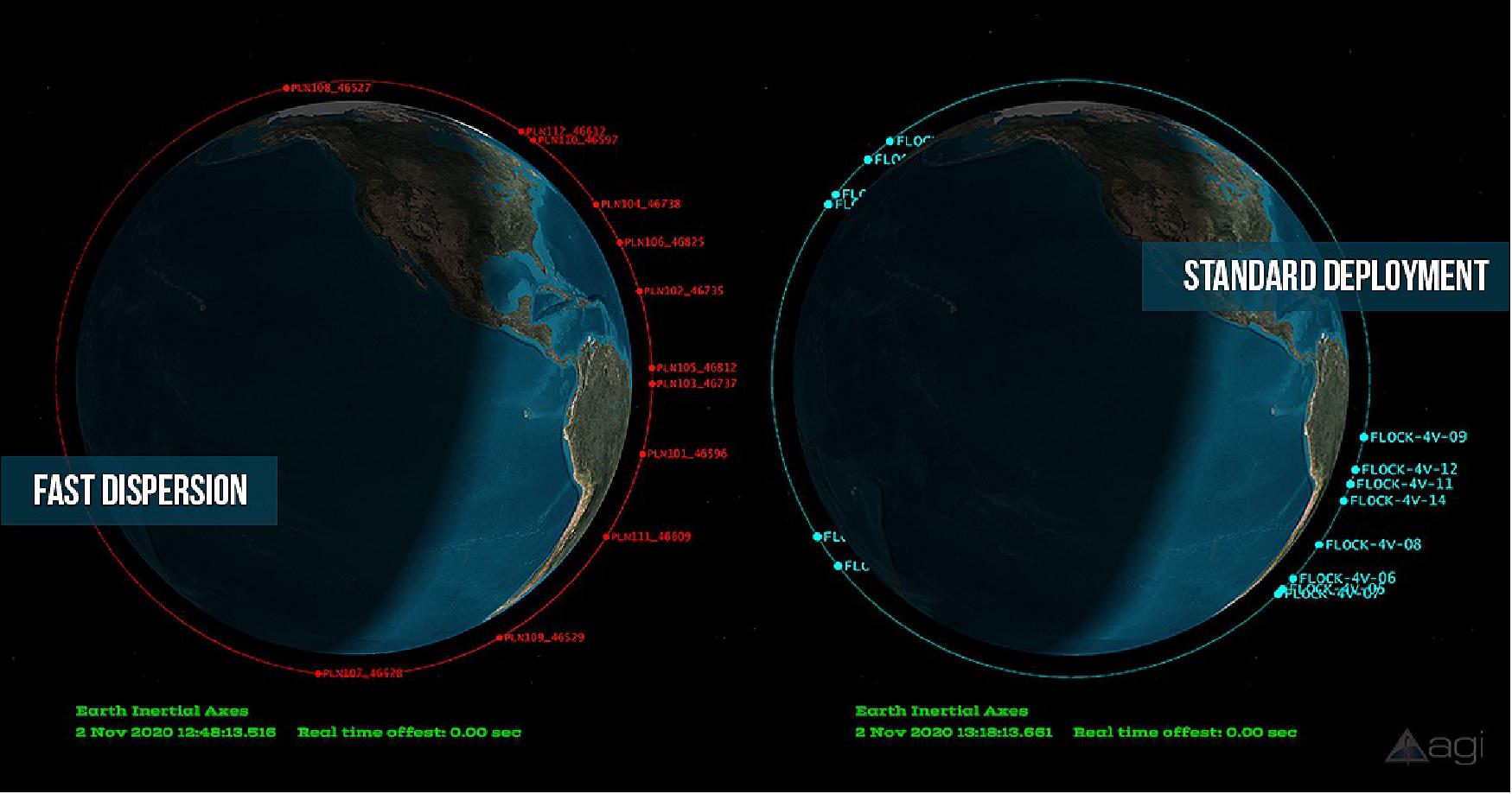
References
1) ”About Us,” D-Orbit, URL: https://www.dorbit.space/about-us
2) ”InOrbit Now Launch and Deployment Services,” D-Orbit Brochure, URL: https://www.dorbit.space/launch-deployment
3) ”ION Hosted Payload Services,” D-Orbit Space, URL: https://www.dorbit.space/_files/ugd/64a0e4_30199c1ee1424e8593ba363d863b6f9f.pdf
4) Jason Rainbow, ”Kepler books orbital transfer vehicle for next launch,” SpaceNews, 30 June 2022, URL: https://spacenews.com/kepler-books-orbital-transfer-vehicle-for-next-launch/
5) Debra Werner, ”D-Orbit valued at $1.28 billion in SPAC deal,” SpaceNews, 27 January 2022, URL: https://spacenews.com/d-orbit-space-deal/
6) ”D-Orbit S.p.A., a Market Leader in Space Logistics, to Combine with Breeze Holdings Acquisition Corp.and Become a Publicly Listed Company,” D-Orbit, 27 January 2022, URL: https://www.dorbit.space/_files/ugd/64a0e4_e851704ffac84c1b869191b9c92ffd09.pdf
7) ”D-Orbit S.p.A., a Market Leader in Space Logistics, to Combine with Breeze Holdings Acquisition Corp. and Become a Publicly Listed Company,” PR Newswire, 27 January 2022, URL: https://tinyurl.com/bdzmfk7y
8) Jeff Foust, ”SpaceX launches fourth dedicated rideshare mission,” SpaceNews, 1 April 2022, URL: https://spacenews.com/spacex-launches-fourth-dedicated-rideshare-mission/
9) ”Dashing Through The Stars,” D-Orbit, 13 January 2022, URL: https://www.dorbit.space/dashing-through-the-stars
10) ”D-Orbit launches new ION Satellite Carrier mission,” SpaceRef, 14 January 2022, URL: http://spaceref.com/news/viewpr.html?pid=59180
11) ”D-Orbit UK signs a Contract with ESA for the Development of Debris Removal Technology,” iPress, 8 September 2021, URL: https://www.ipresslive.it/comunicates/47775/d-orbit-uk-signs-a-contract-with-esa-for-the-development-of-debris-removal-technology
12) Jeff Foust, ”SpaceX launches second dedicated rideshare mission,” SpaceNews, 30 June 2021, URL: https://spacenews.com/spacex-launches-second-dedicated-rideshare-mission/
13) ”Wild Ride mission updates,” D-Orbit, 30 June 2021, URL: https://www.dorbit.space/wildride-mission-updates
14) ”Wild Ride Mission Booklet,” D-Orbit, URL: https://www.dorbit.space/_files/ugd/64a0e4_1b982a9343a547e38ed10502b0e25fff.pdf
15) ”SpaceX launches a 'rideshare' mission carrying 143 spacecraft, a record for a single launch,” CNBC, 24 January 2021, URL: https://www.cnbc.com/amp/2021/01/24/spacex-launches-rideshare-mission-with-143-spacecraft.html
16) ”PULSE mission updates,” D-Orbit, 24 January 2021, URL: https://www.dorbit.space/mission-updates-pulse
17) Caleb Henry, ”Arianespace launches Vega on return-to-flight mission with 53 smallsats,” SpaceNews, 3 September 2020, URL: https://tinyurl.com/yxpkk4rt
18) ”Origin Mission ION SCV Lucas,” D-Orbit, 3 September 2020, URL: https://www.dorbit.space/our-heritage
19) ”Origin Mission updates,” D-Orbit, 3 September 2020, URL: https://www.dorbit.space/mission-updates-origin
The information compiled and edited in this article was provided by Herbert J. Kramer from his documentation of: ”Observation of the Earth and Its Environment: Survey of Missions and Sensors” (Springer Verlag) as well as many other sources after the publication of the 4th edition in 2002. - Comments and corrections to this article are always welcome for further updates (eoportal@symbios.space).